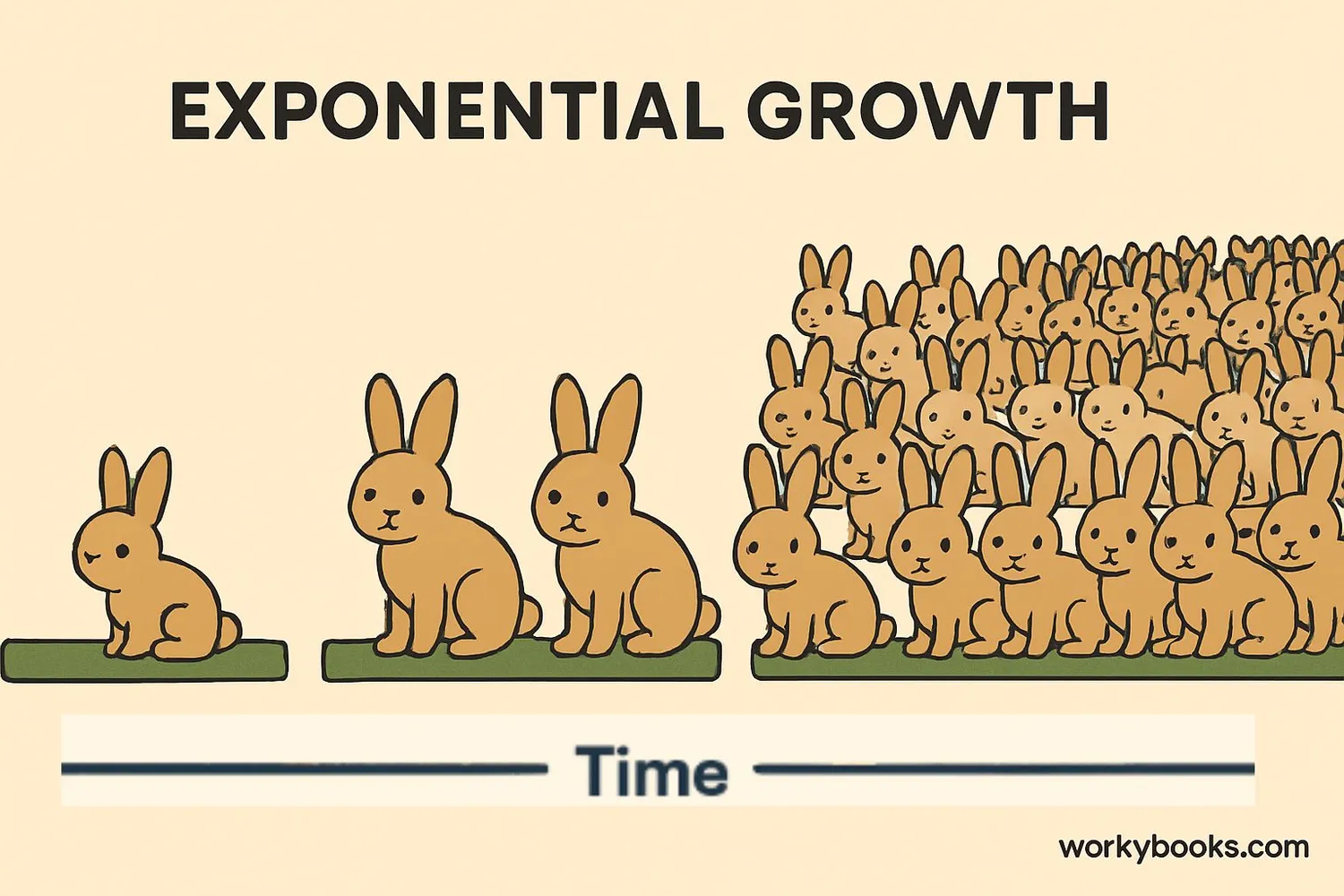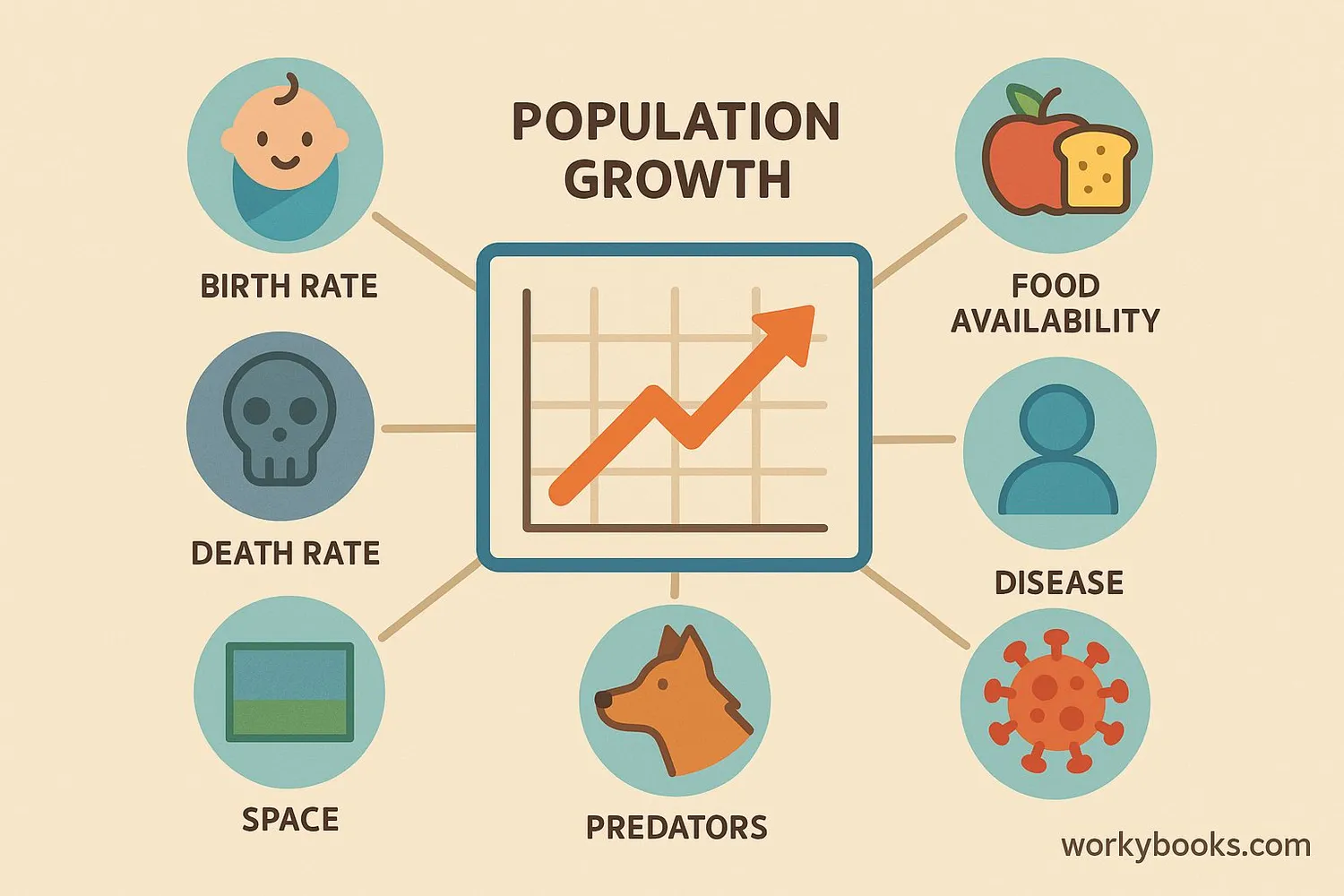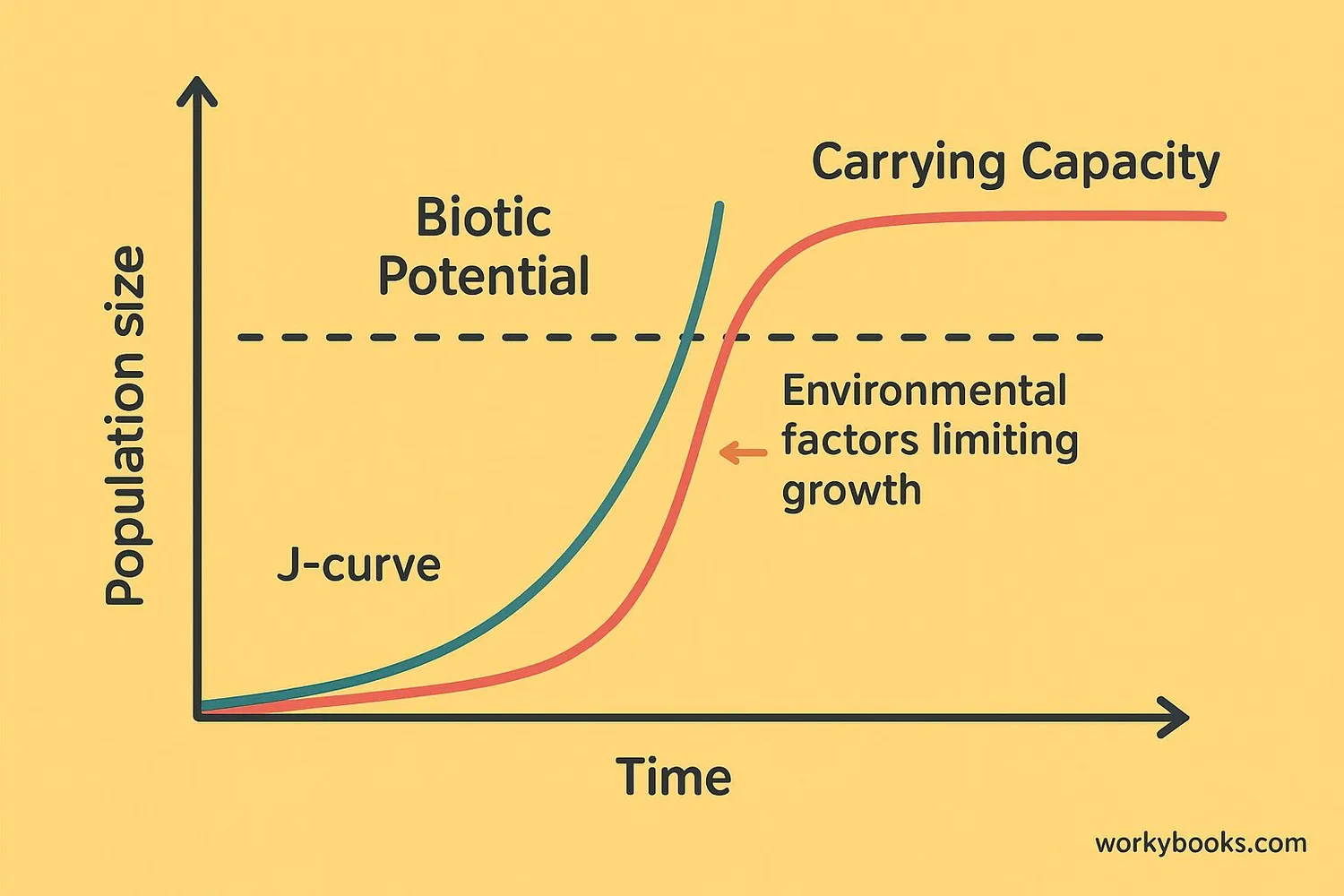Biotic Potential - Definition, Examples, Quiz, FAQ, Trivia
Discover how populations grow and what limits their size in nature
What is Biotic Potential?

Biotic potential is the maximum capacity of a species to reproduce and grow its population under ideal environmental conditions. Think of it as nature's "what if" scenario: What if every single offspring survived? What if there was unlimited food, water, and space? What if there were no predators or diseases?
Under these perfect conditions, populations would grow incredibly fast! For example, a single pair of rabbits could theoretically produce over 30 million descendants in just five years if nothing limited their reproduction and survival.
Did You Know?
The biotic potential of bacteria is so high that one bacterium could theoretically produce over 4.7 × 10²¹ descendants in just 24 hours if nothing limited its growth!
Factors Affecting Biotic Potential

Several key factors determine a species' biotic potential. Species with high biotic potential typically have these characteristics:
Reproduction Rate
How often and how many offspring are produced
Gestation Period
How long it takes for offspring to develop
Reproductive Age
When species can start reproducing
Lifespan
How long individuals live and reproduce
For example, insects like mosquitoes have very high biotic potential because they reproduce quickly, have many offspring at once, and reach reproductive age rapidly. In contrast, elephants have lower biotic potential because they have long gestation periods (22 months!) and typically only have one calf at a time.
Biotic Potential vs Carrying Capacity

While biotic potential shows what's possible in perfect conditions, carrying capacity shows what's realistic in nature. Carrying capacity is the maximum number of individuals an environment can support indefinitely.
| Aspect | Biotic Potential | Carrying Capacity |
|---|---|---|
| Definition | Maximum reproductive capacity under ideal conditions | Maximum population an environment can sustain |
| Growth Pattern | Exponential (J-curve) | Logistical (S-curve) |
| Limiting Factors | None (theoretical) | Food, water, space, predators, disease |
| Real-world Example | Bacteria in a petri dish with unlimited nutrients | Deer population in a forest limited by food supply |
In nature, populations never reach their full biotic potential because environmental resistance (limiting factors) always comes into play. These factors include competition for resources, predation, disease, and limited space.
Real World Example
When reindeer were introduced to St. Matthew Island, their population exploded at first (showing high biotic potential) but then crashed dramatically when they exceeded the island's carrying capacity by eating all available lichen.
Biotic Potential Knowledge Check
Test your understanding of biotic potential with this quiz. Answer all 5 questions to see how much you've learned.
Frequently Asked Questions
Here are answers to some common questions about biotic potential:
Interesting Facts About Biotic Potential
Discover some amazing facts about population growth and biotic potential!
Exponential Growth
If a single bacterium divided every 20 minutes without limits, in just 36 hours it could cover the entire Earth with a layer one foot deep!
Insect Champions
Aphids have such high biotic potential that they can produce up to 5 trillion descendants from one female in a single season under ideal conditions!
Human Population
Despite having relatively low biotic potential compared to many species (long gestation, usually one baby at a time), human population grew from 1 billion to 7 billion in just 200 years due to reduced mortality rates.
Plant Potential
Some plants like the Kentucky coffee tree can produce over 10,000 seeds per year, showing incredibly high biotic potential when conditions are right.


